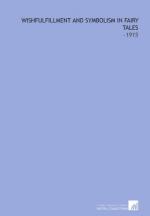|
This section contains 6,453 words (approx. 22 pages at 300 words per page) |

|
SOURCE:“Food for Sight: Perrault's ‘Peau d’âne,’” in MLN, Vol. 106, No. 4, September, 1991, pp. 793-817.
In the excerpt below, Lewis analyzes culinary themes in Perrault's “Peau d’âne” and “Cendrillon.”
[B]efore looking more closely at Louis Marin's [scholar and author of the influential study La parole mangée] intriguing line on the tales of Charles Perrault, we should outline the larger historical scheme in which his reading of the tales takes root. Marin's understanding of the culinary sign stems from the study of representation and representationality that he elaborates in La critique du discours, a study that takes the Logique of Port-Royal to be the pivotal text in French intellectual history of the seventeenth century. The Logique endeavors to construct for Cartesian rationalism a theory of representation and of signification that Descartes left in a conspicuously underdeveloped state in his work. To put it crudely, that theory...
|
This section contains 6,453 words (approx. 22 pages at 300 words per page) |

|


